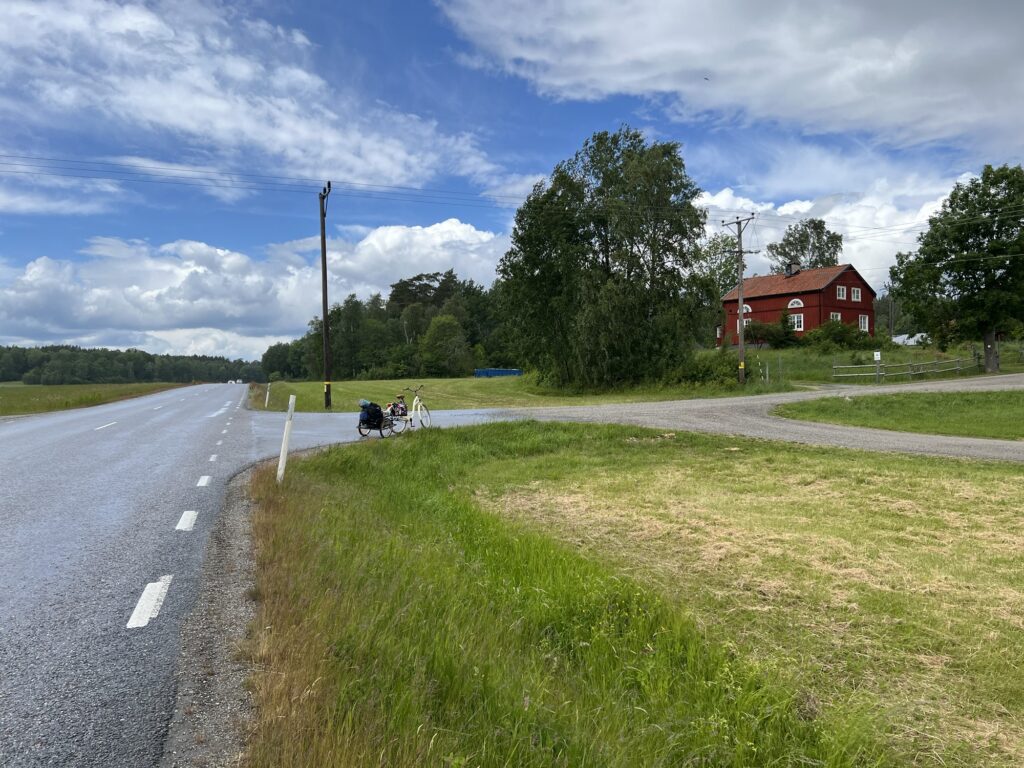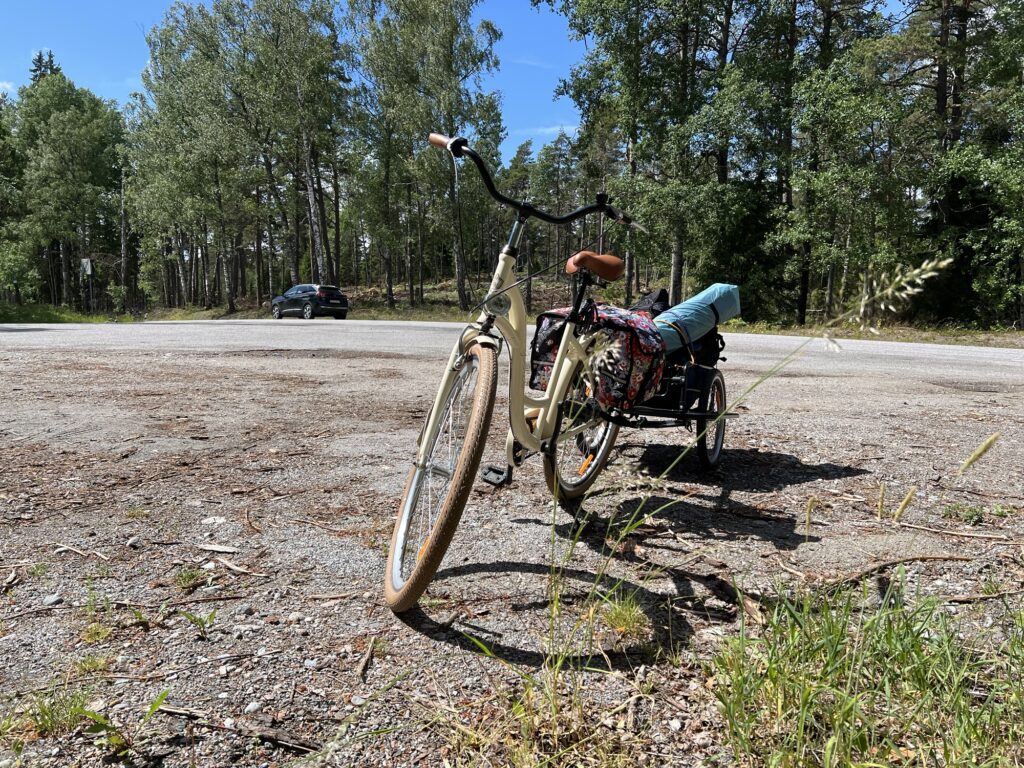I’m not in particularly good shape.
I used to be. I’ve run marathons, competed in national road biking championships, and hiked across more mountaintops than most people will visit in a lifetime. But alas; between pandemic years, bouts of depression, moving countries, job hunting, and starting full time work again, I regret that maintaining good health and stamina has fallen by the wayside a bit.
On top of that, I am not biking under optimal conditions — by design. My days of competitive biking may be long since behind me, but even so, 550km should be perfectly doable in a few days on a carbon fibre race bike, its weight optimised to the smallest screw, and its every angle optimised for the maximal transfer of force with every movement of the pedals.
I’m not biking on one of those. I’m biking on this:

That’s where the problems (but also the fun!) begins. I had to scrub yesterday’s launch window and leave this morning instead, because finalising the packing took longer than expected, and I had to repack so many times I lost count. Each time I slimmed down the luggage a bit more, sacrificing a lot of nice-to-haves along the way, and optimising the distribution of both weight and volume. Yet even so, I worry that I should have cut it down more still.
The basic problem I face here, is one you may know from physics class, a special interest in spacefaring, or one of the many science fiction books you read before screens started making the simple act of setting aside time for reading ever more difficult. (They’re still waiting on your bookshelf, ready to greet you like an old friend whenever you are ^^)
A rocket has some amount of mass from all the payload, instruments, and general rocketry it has to carry along with it into space. To get all that mass up to same height h against the force of gravity, it needs speed. The amount of speed it needs to get from one height to another against the force of gravity from a specific gravitational body, is denoted as ∆v. And so the rocket needs some amount of fuel to get that ∆v — but that means it also has to lug along that fuel. And since it takes more fuel to get a certain amount of mass to a certain ∆v, it now needs even more fuel to compensate for the mass of the first fuel. And then it needs more fuel to compensate for the mass of that fuel — and so on and so forth, ad infinitum. Thankfully the series converges for any finite value ∆v (with some asterisks attached), so it never takes an infinite amount of fuel. Fortunately for mathematics, this actually resolves to a beautiful and simple equation. Unfortunately for Physics, it still makes space travel exponentially harder the further you want to go.

Now, why do I mention all this?
Well, as I’ve been cycling out from the Stockholm area, it’s been on my mind because it’s a useful analogue for the basic principles making this trip hard.
My days of biking 60km in an hour may be firmly behind me, but it’s still an achievable max speed. Yet for a longer distance, that is obviously not sustainable. This is a marathon, not a sprint. So let’s say there is some basic cruising speed v that I can maintain not indefinitely, but long enough to take a decent chunk out of the target distance, and continue with the next day.
Now, by lowering the cruising speed, we are also extending the duration of the journey. This requires more supplies — food, basic camping gear to sit down and rest during breaks, and so on.
Adding more gear, increases the load and decreases the sustainable cruising speed. This, in turn, increases the duration of the trip — which increases the amount of gear required. From a bowl and some simple food, to a storm kitchen. From a surface to sit on, to a hamock to a tent. More clothes, more gear, and more supplies to prepare for increasingly likely contingencies. And not least, a bike trailer to carry everything in. Add in some simple comforts, and it quickly spirals out of control. And so as the length of a journey goes up, the need for supplies goes up exponentially. It’s like a sibling to the rocket equation — a more general transport equation of sorts.
Now, people have biked a lot longer than the journey I have embarked on, and bringing a lot less than I am. Truthfully, I didn’t need to bring half this much, for all that I cut it down to basics. This is for much the same reason why the rocket equation does not put an absolute limit on how far we can one day travel towards the stars — you can resupply along the way. If you start out with enough fuel to go to the moon, and can resupply there with enough fuel to leave its comparatively much shallower gravity well, you can travel a heck of a lot further on exactly the same amount of overall fuel.
So did I need to bring as much food as I did? Not really. I’ll never be far from civilisation. But still — it doesn’t hurt to be prepared.


If today’s entry doesn’t seem particularly focused on the biking experience itself, don’t worry — I’ll have a lot more to report on that tomorrow. Biking out of a major city just isn’t that interesting comparatively, and I had a lot of packing reflections to get out of my system.
Untill tomorrow
— Lexi